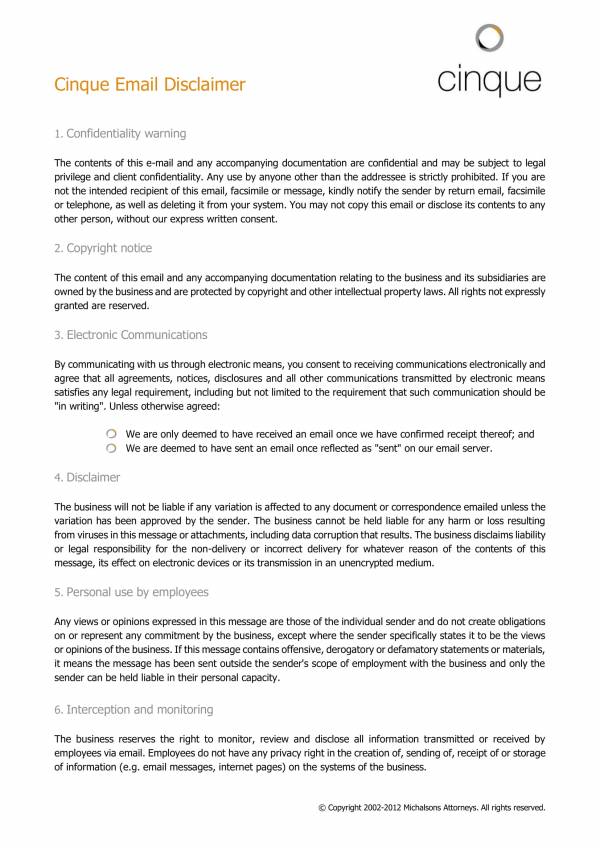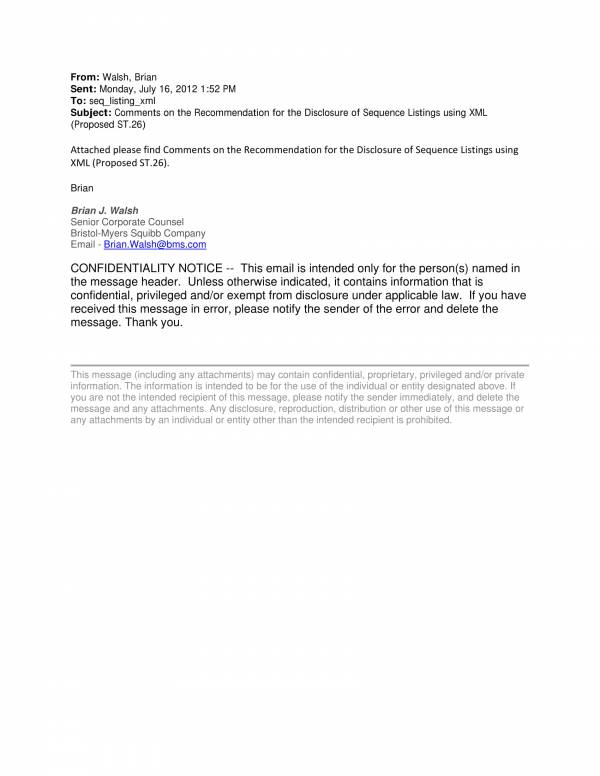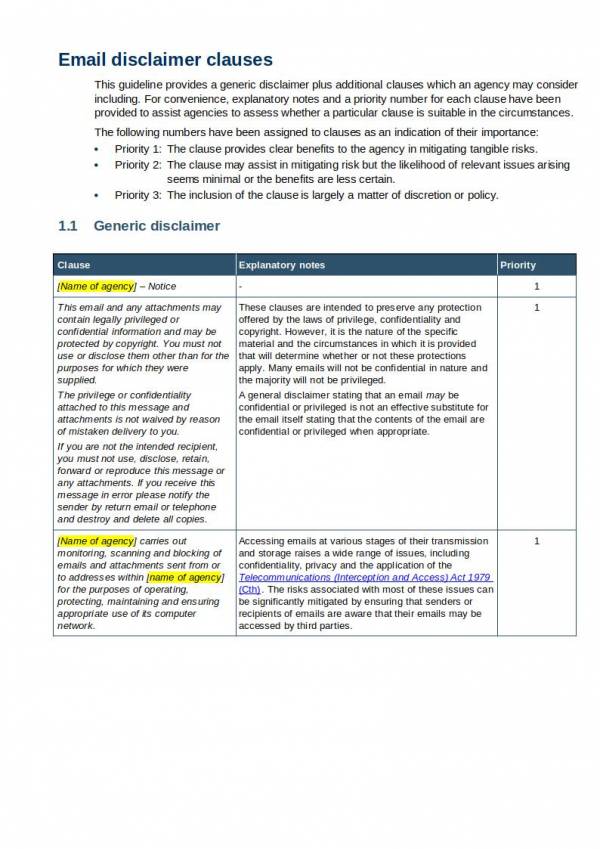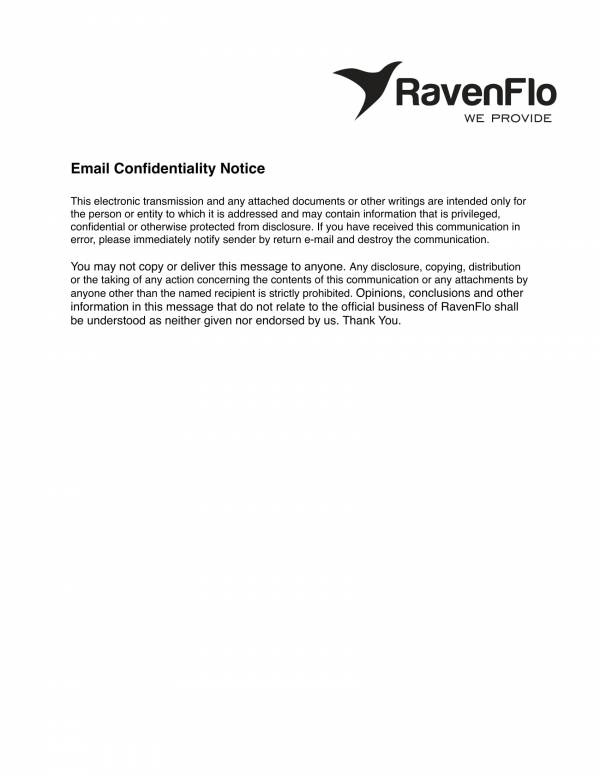What do you do when you want to deny something that you just said? You use a disclaimer. Disclaimers are common in fiction books. Authors write novels inspired by the people around them, so their stories may have a little resemblance to people they know. A disclaimer is a statement that denies the resemblance or relation of the characters’ relation to real people or persons. Aside from novels and other printed documents, disclaimers are also used digitally. One of the common digital disclaimers we know is an email disclaimer.
What Is an Email Disclaimer?
Call it an email disclosure, a confidentiality notice, or a footer. These terms all serve the same purpose, and that is to warn readers of the consequences of reading the content of the email that is not intended for them. Email disclosures are often added in email signatures to ensure that all emails containing confidential information are protected. An email disclaimer is a form of legal statement that serves as a notice to avoid breaches in confidentiality, employee liability, and contractual claims. A separate section in the email is provided solely for the disclaimer, usually at the top before the email message can be seen. In other forms or templates, you can see the disclaimer in the important notice part.
There are also website disclaimers posted on online websites often located at the bottom of the page or as a pop-up message. It’s important to read these disclaimers so that you’ll know what you’re getting yourself into and avoid any serious problems or violations.
Believe It or Not?
Why add a disclaimer to an email and other documents? Legal information disclaimers protect against confidentiality breaches, contracts that are unintentional, negligent or misleading statements, and employer’s liability. The HIPAA or Health Insurance Portability and Accountability Act requires medical information disclaimers for all emails containing patient records to keep all information within the email confidential. It also promotes awareness of what a person is about to read or look into. Disclaimers are legally useful, although there is no legal authority on its effectiveness. There are also disclaimers that have limited effects.
With that being said, should I take email disclaimers seriously? A disclaimer is added to an email for a reason, and that reason is to warn readers that they should not read the email if it’s not addressed to them. It’s common sense not to read emails or letters not sent to you, but some people tend to disregard this basic etiquette. It’s up to you if you want to take email disclaimers seriously or not. Whatever your choice is, always remember that there are corresponding consequences that you will need to face now or in the future. So choose wisely what you want to believe in.
How to Make an Email Disclaimer
Need help making an email disclaimer? Well, you’ve come to the right page. We’ve gathered tips that will help you come up with a useful and reliable email disclaimer to add to your email.
Tip #1: Use good email disclaimer examples.
There are plenty of email disclaimer samples online, but how do you know if they are good examples? One way to tell if a disclaimer is useful is when it applies to the transaction where it is attached. Using a newsletter disclaimer for a confidential email is definitely not acceptable and will do you no good. Because there are several types of email disclaimers that use the same statements, most company’s use them as their company disclaimer often adding relevant details.
Tip #2: Add an email signature.
A good email signature includes basic information, like one’s name, address, company, and contact details. An email disclaimer is often added after the email signature by some individuals. This is in case they send the email to the wrong person.
Tip #3: Provide a separate section.
Write your email disclaimer on top of your email before the rest of the email content is seen. The disclaimer should be the first thing that the recipient sees before they proceed to read the email content. Putting the disclaimer in a different section separates it from the email to prevent confusion.
Tip #4: Is it appropriate?
The wording or statement in a disclaimer must be relevant or appropriate to the transaction conducted in the email. Using a random disclaimer will not be effective and may not be useful in keeping the confidentiality of the information associated with the transaction.
Email Disclaimer Samples
Here are a few email disclaimer samples that you can check out and use as reference.
1. Email Disclaimer Sample in PDF
2. Sample Email Disclaimer for Translated Prosppectus
3. HIPPA Email Confidentiality Disclaimer Sample
4. Simple Email Disclaimer Sample
5. Sample Email Disclaimer Clauses
6. Sample Email Confidentiality Disclaimer
7. Footer Email Discaimer Sample
It’s safe to add an email disclaimer if you’re regularly sending emails for work or for business. If you don’t have an email disclaimer, it’s not too late to add one now. Prevention is always better than cure so don’t wait for a mistake to happen. Add that disclaimer and protect your emails now!
Related Posts
T shirt Order Form Sample - 12+ Examples in Word, PDF
Sample Debit Order Form - 12+ Examples in Word, PDF
FREE 9+ Sample Legal Information Disclaimers - PDF
FREE 29+ Sample Email Signatures in HTML Photoshop | PSD ...
FREE 5+ Contractor Disclaimer Samples in PDF
Sample Background Check Form - 10+ Examples in PDF, Word
9+ Sample Website Disclaimers - PDF
9+ Sample Ebook Disclaimer - PDF
Sample Employee Emergency Contact Form - 7+ Examples in Word ...
Sample Business Name Change Letter - 8+ Examples in Word, PDF
Sample Dental Release Form - 11+ Examples in Word, PDF
Sample Privacy Statement - 9+ Examples in Word, PDF
9+ Sample Medical Website Terms and Conditions - PDF
10+ Medical Waiver Forms - Free Sample, Example, Format
Sample Parental Release Form - 10+ Examples in Word, PDF






